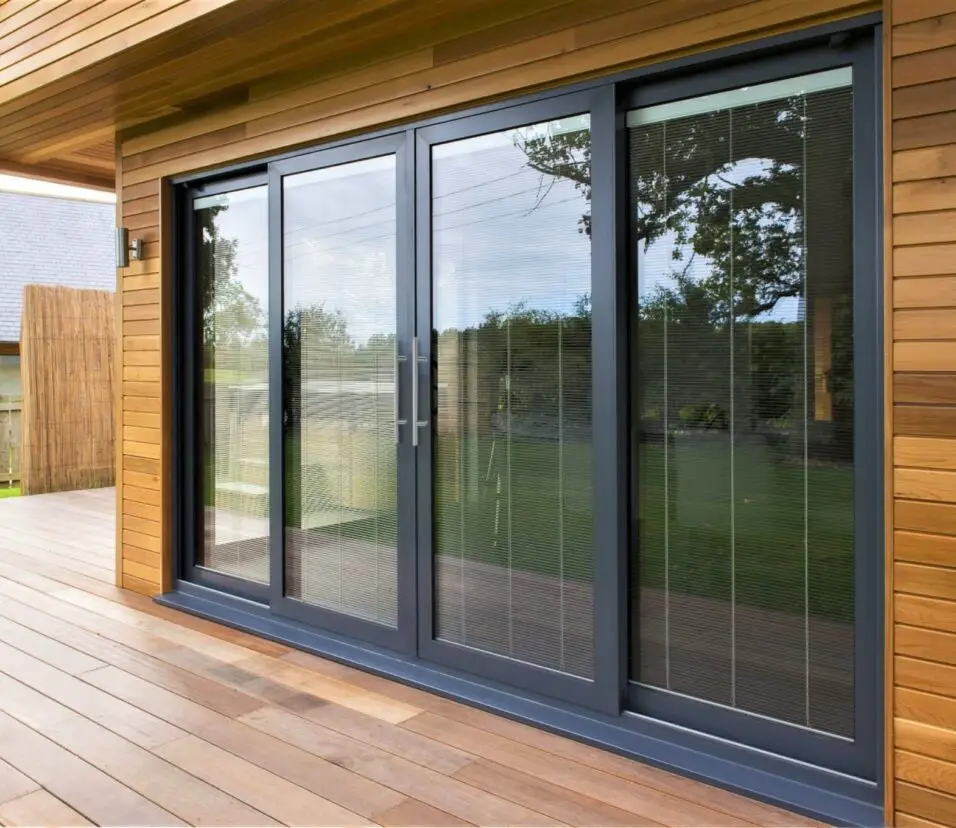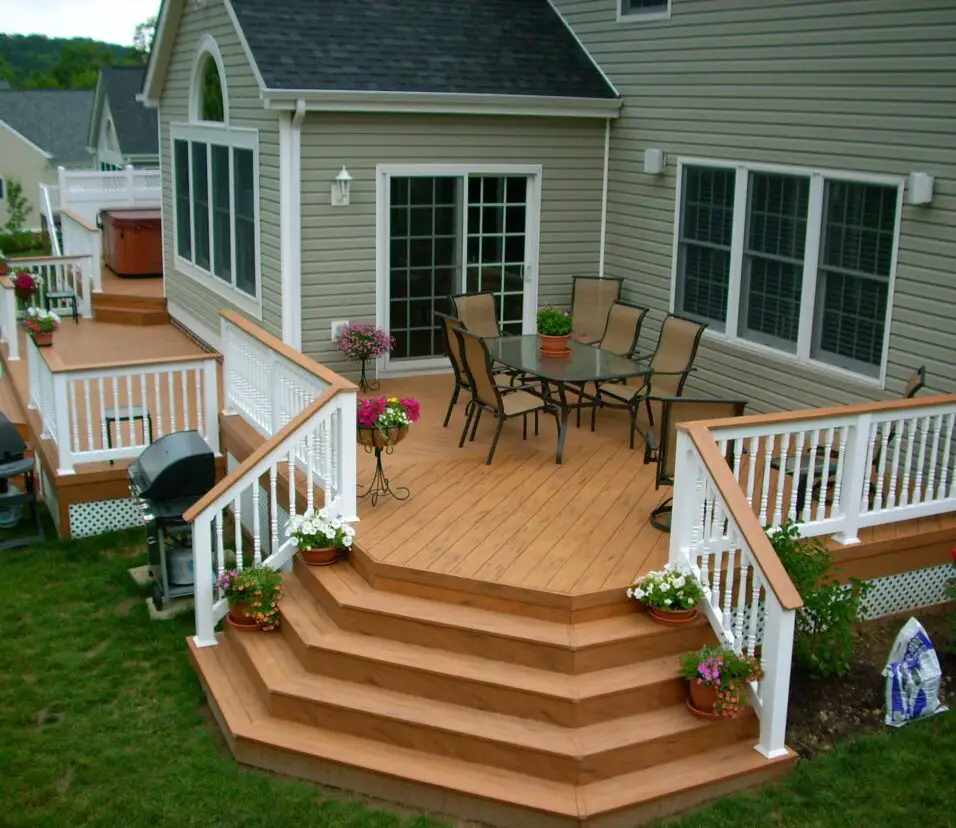How To Winterize A Patio Door
Introduction
How To Winterize A Patio Door: Winterizing your patio door is an essential step in preparing your home for the colder months. As the temperatures drop and the wind picks up, it’s important to ensure that your patio door is properly sealed and insulated to keep the cold air out and the warm air in. By taking the time to winterize your patio door, you can not only increase the energy efficiency of your home but also create a more comfortable living space for you and your family.
One of the first steps in winterizing your patio roof is to check for any drafts or leaks. These can often be found around the edges of the door or in the gaps between the door and the frame. To identify these problem areas, you can use a candle or a piece of tissue paper. Simply hold it near the edges of the door and if you notice the flame flickering or the tissue paper moving, it’s a sign that there is a draft. Once you have identified these areas, you can use weatherstripping or caulk to seal them and prevent any cold air from entering your home.
Another way to winterize your patio door is to install a door sweep. This is a strip of material that is attached to the bottom of the door, creating a seal between the door and the floor. Door sweeps are available in various materials, such as rubber or bristle, and can be easily installed using adhesive or screws. By adding a door sweep, you can prevent drafts and keep the cold air out, making your home more comfortable and energy-efficient.

How do I stop cold air coming through my patio door?
Install panels of rigid foam insulation on and around your sliding patio doors for a cost-effective insulator. While it may not look pretty, foam and plastic panels are good insulators. They can be bought in thicknesses of 4 to 5 inches and can easily be installed on the part of your glass door that doesn’t open.
1. Weatherstripping: One of the most effective ways to stop cold air drafts is by using weatherstripping. Weatherstripping is a material that is applied to the edges of the door to create a seal. It helps to prevent air leaks and keeps the cold air out. There are different types of weatherstripping available, such as adhesive-backed foam tape or V-strip weatherstripping. Choose the one that best suits your needs and apply it to the edges of your patio door.
2. Door sweeps: Another option to prevent cold air from coming through your patio door is to install a door sweep. A door sweep is a strip of material that is attached to the bottom of the door to create a seal against the floor. It helps to block drafts and keep the cold air out. Door sweeps are easy to install and can make a significant difference in reducing drafts.
3. Insulated curtains or blinds: Using insulated curtains or blinds can also help to stop cold air from entering your home through the patio door. These window coverings have an extra layer of insulation that helps to block drafts and keep the cold air out. When closed, they create a barrier between the cold air outside and the warm air inside, helping to maintain a comfortable temperature in your home.
What is the best way to insulate a sliding glass door?
Thermal Curtains
Adding thick, insulated curtains or cellular blinds to the inside of your sliding doors is a great way of keeping the heat in and creating a cosy, homely atmosphere. Be sure to go for heavy, thermal curtains rather than regular curtains, to get the best results.
Insulating a sliding glass door is important to prevent heat loss or gain, reduce noise, and improve energy efficiency. There are several effective ways to insulate a sliding glass door, depending on your specific needs and budget. Here are some of the best methods to consider:
Weatherstripping: One of the simplest and most cost-effective ways to insulate a sliding glass door is by using weatherstripping. This involves applying adhesive-backed foam strips or rubber gaskets to the edges of the door and the frame to create a tight seal. Weatherstripping helps to prevent drafts and reduce energy loss.
Window film: Another option for insulating a sliding glass door is to apply window film. This thin, transparent film is designed to reduce heat transfer and block UV rays. It can be easily applied to the glass surface and provides an additional layer of insulation. Window film is available in different types, such as reflective or low-emissivity (low-e) film, which can further enhance energy efficiency.
Insulated curtains or blinds: Installing insulated curtains or blinds can also help to insulate a sliding glass door. These window treatments are designed with thermal backing or multiple layers of fabric to provide insulation and reduce heat transfer. They can be opened or closed as needed to control light and privacy.
How do you keep drafts out of patio doors?
Use foam or plastic insulation
Install panels of rigid foam insulation on and around your sliding patio doors for a cost-effective insulator. While it may not look pretty, foam and plastic panels are good insulators.
Keeping drafts out of patio doors is essential for maintaining a comfortable and energy-efficient home. Drafts can not only make your living space uncomfortable but also lead to increased energy consumption and higher utility bills. Fortunately, there are several effective methods to prevent drafts and keep your patio doors well-insulated.
Weatherstripping: One of the most common and effective ways to keep drafts out of patio doors is by using weatherstripping. Weatherstripping is a material that is applied to the edges of doors and windows to create a seal and prevent air leakage. It can be made of various materials such as rubber, foam, or vinyl. Weatherstripping is easy to install and can significantly reduce drafts and energy loss.
Draft stoppers: Another simple and affordable solution to keep drafts out of patio doors is by using draft stoppers. These are long, narrow tubes filled with insulating material that can be placed along the bottom of the door to block drafts. Draft stoppers are particularly effective in preventing cold air from entering and warm air from escaping.
Window film: Applying window film to your patio doors can also help in reducing drafts. Window film is a thin, transparent sheet that can be easily installed on the glass surface of the door. It acts as an additional layer of insulation, reducing heat transfer and preventing drafts. Window film is available in various types, including heat control film and insulating film, which can provide different levels of insulation.
How do you insulate under a patio door?
To insulate sliding glass patio door simply apply or refresh caulking into gaps of the door casing. Check the caulking for cracks around the frames and where the doors contact the house. The caulk should be in good condition, and if it isn’t, it will need to be replaced.
One effective way to insulate under a patio door is by using weatherstripping. Weatherstripping is a material that is applied to the bottom of the door to create a seal and prevent air leakage. It is typically made of rubber or foam and can be easily installed by homeowners. To apply weatherstripping, start by measuring the width of the door and cutting the weatherstripping to fit. Then, peel off the adhesive backing and press the weatherstripping firmly against the bottom of the door. This will create a tight seal and prevent air from entering or escaping.
Another option for insulating under a patio door is by using a door sweep. A door sweep is a strip of material that is attached to the bottom of the door to block drafts and keep out insects and debris. It is typically made of rubber or vinyl and can be easily installed with screws or adhesive. To install a door sweep, start by measuring the width of the door and cutting the sweep to fit. Then, attach it to the bottom of the door using the provided screws or adhesive. This will create a barrier against air and improve insulation.
What blocks cold air from doors?
To keep cold air out, V-type weather strips seal against a door or window jam.
Several variables can prevent cold air from penetrating doors. Weatherstripping is a popular practice. Door edges are sealed with weatherstripping to prevent air leakage. It’s usually put on the door’s bottom, sides, and top in rubber, foam, or vinyl.
Use door sweeps to exclude cold air from doorways. Door sweeps are strips of material applied at the bottom of doors to block drafts. Their rubber or vinyl construction makes them easy to install by sliding them onto the door bottom or screwing them in.
- Check for gaps and seal them: Check the door for cracks and holes that could let chilly air in. Use weatherstripping or caulk to fill these spaces and avoid drafts.
- Attach a door sweep: A door sweep is a strip of cloth that blocks drafts at the bottom of the door.
3. Use window film: Applying window film to the glass of the patio door can provide an extra layer of insulation. This film helps to reduce heat loss and can be easily removed when spring arrives.
Are there any specific materials or products that are recommended for winterizing a patio door?
When it comes to winterizing a patio door, there are several materials and products that are highly recommended:
1. Weatherstripping: Weatherstripping is an essential material for sealing gaps around the door frame. It comes in various forms, such as adhesive strips or door sweeps, and is readily available at hardware stores.
2. Caulk: Caulk is another important product for sealing gaps and cracks in the door frame. It is best used for smaller gaps and can be easily applied with a caulk gun.
3. Window film: Window film is a thin, transparent material that can be applied to the glass of the patio door. It helps to reduce heat loss and is available in different styles, including insulating and decorative options.
Are there any specific materials or products that are recommended for winterizing a patio door?
To maximize efficiency and cold weather protection, numerous materials and products are recommended for patio door winterization. Important materials include weatherstripping. Weatherstripping, usually rubber or foam, seals door edges. It prevents drafts and cold air from entering your home. You need weatherstripping that can resist harsh winter temperatures.
Door sweeps are also advised for patio door winterization. A door sweep is a strip of material affixed to the bottom of the door to close the floor-door gap. This prevents drafts and cold air entry. Door sweeps come in rubber or vinyl, so choose one that fits your door.
How often should a patio door be winterized?
It is recommended to winterize a patio door at least once a year, preferably before the winter season begins. This will ensure that the door is properly sealed and insulated, preventing any drafts or heat loss during the colder months. However, the frequency of winterizing may vary depending on the specific climate and weather conditions in your area. If you live in an area with harsh winters or extreme temperature fluctuations, it may be beneficial to winterize your patio door more frequently, such as every six months or as needed.
Regular winterization not only helps to maintain the energy efficiency of your patio door but also prolongs its lifespan. Over time, the weatherstripping and seals on the door may wear out or become damaged, leading to decreased insulation and potential drafts. By winterizing your patio door regularly, you can identify and address any issues early on, preventing further damage and ensuring optimal performance.
Are there any potential risks or issues that can arise if a patio door is not properly winterized?
Yes, there can be several potential risks and issues that can arise if a patio door is not properly winterized. One of the main risks is energy loss. A poorly winterized patio door can allow cold air to seep into your home and warm air to escape, leading to higher heating costs and a less comfortable living environment. This can also put additional strain on your heating system, potentially leading to increased energy consumption and higher utility bills.
Another issue that can arise is condensation. If a patio door is not properly sealed or insulated, it can create a temperature difference between the inside and outside of the door. This temperature difference can cause condensation to form on the glass, which can lead to mold and mildew growth if not addressed. Additionally, condensation can also damage the surrounding walls and flooring, leading to costly repairs.
Are there any additional tips or tricks for maximizing energy efficiency when winterizing a patio door?
Yes, there are several additional tips and tricks that can help maximize energy efficiency when winterizing a patio door. One important tip is to use weatherstripping to seal any gaps or cracks around the door frame. This can help prevent drafts and keep cold air from entering the home. It is also recommended to use draft stoppers or door sweeps at the bottom of the door to further prevent drafts.
Another tip is to use window film or insulating curtains on the patio door. Window film can help to insulate the glass and reduce heat loss, while insulating curtains can provide an extra layer of insulation. It is also a good idea to keep the curtains or blinds closed at night to help retain heat.
Additionally, using a door snake or draft guard along the bottom of the door can help prevent drafts and keep cold air out. This can be especially beneficial if there is a large gap between the door and the floor. Finally, it is important to regularly check and replace any worn or damaged weatherstripping or seals to ensure maximum energy efficiency.

Conclusion
Winterizing a patio door is an essential step in preparing your home for the colder months. By properly sealing and insulating your patio door, you can prevent drafts, reduce energy loss, and keep your home warm and comfortable throughout the winter season. Whether you have a sliding glass door or a hinged patio door, there are several steps you can take to winterize it effectively.
Firstly, you should inspect the door for any cracks, gaps, or damaged weatherstripping. These can allow cold air to enter your home and warm air to escape, leading to higher energy bills and a less comfortable living environment. If you notice any issues, it is important to address them before winter arrives. You can use caulk or weatherstripping to seal any gaps or cracks around the door frame, ensuring a tight seal.
Secondly, consider adding insulation to your patio door. This can be done by using window film or applying weatherstripping tape to the glass. Window film is a transparent material that can be applied directly to the glass surface, creating an additional barrier against cold air. Weatherstripping tape, on the other hand, can be applied to the edges of the glass to provide insulation.
Additionally, you may want to consider using draft stoppers or door sweeps to further prevent drafts. Draft stoppers are long, narrow pillows that can be placed along the bottom of the door to block cold air from entering. Door sweeps, on the other hand, are strips of material that can be attached to the bottom of the door to create a seal against drafts. Both of these options are relatively inexpensive and easy to install.








